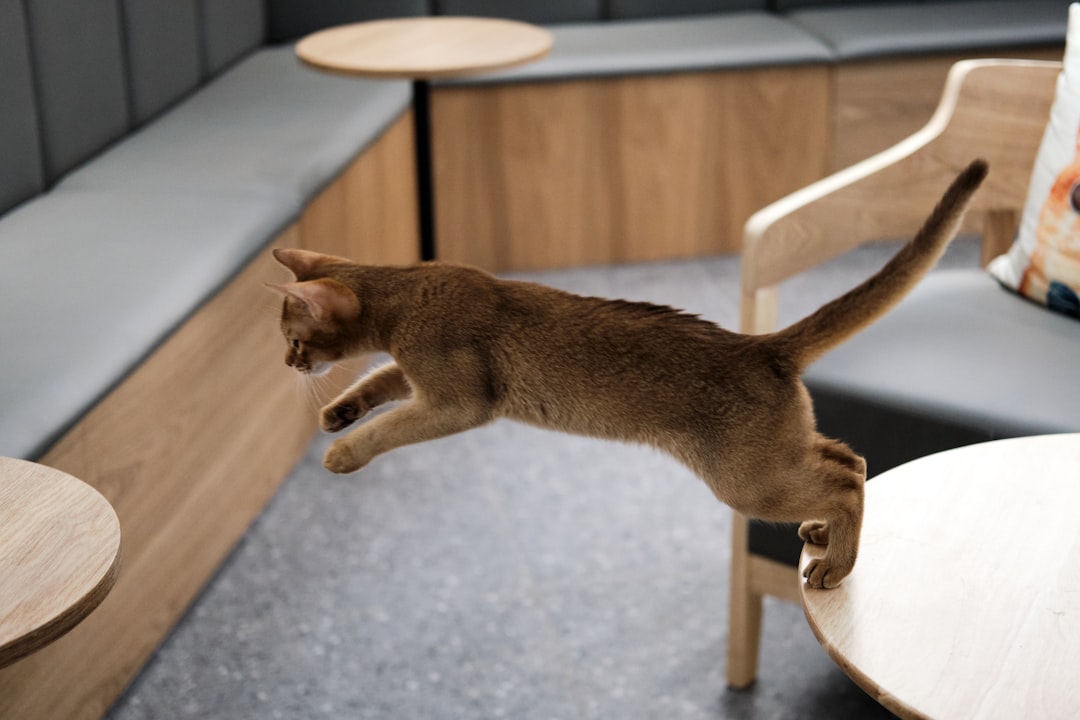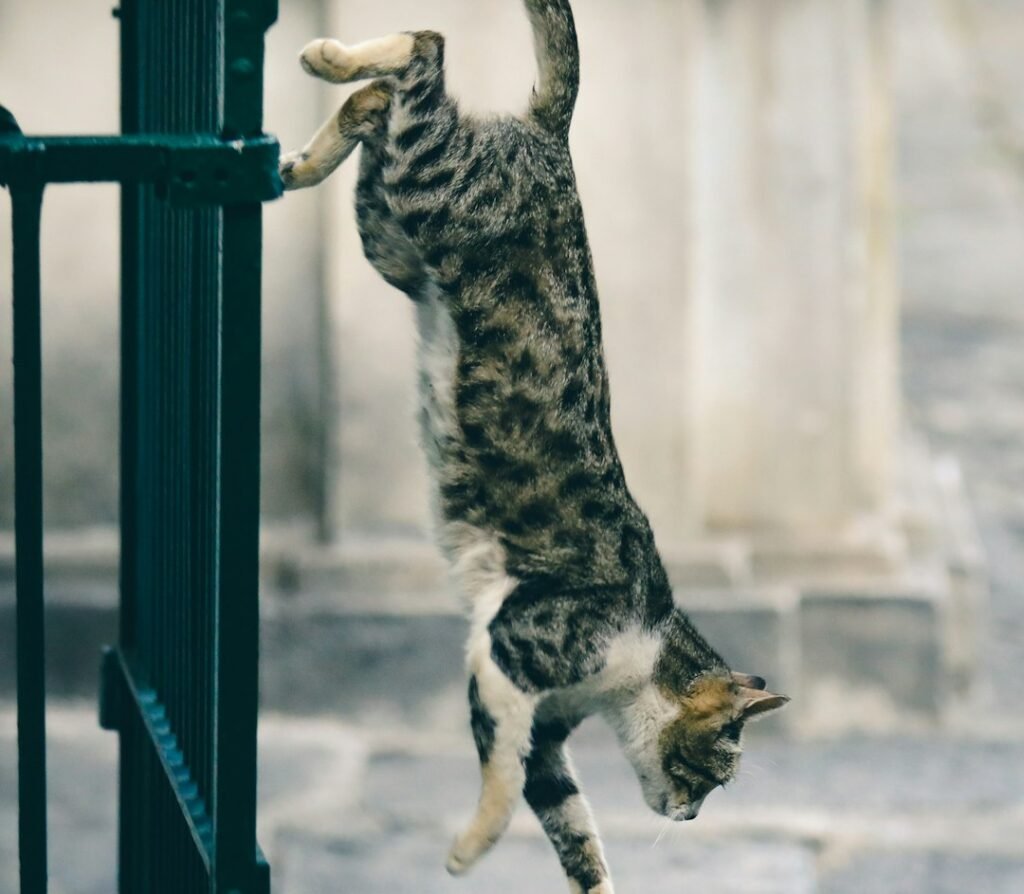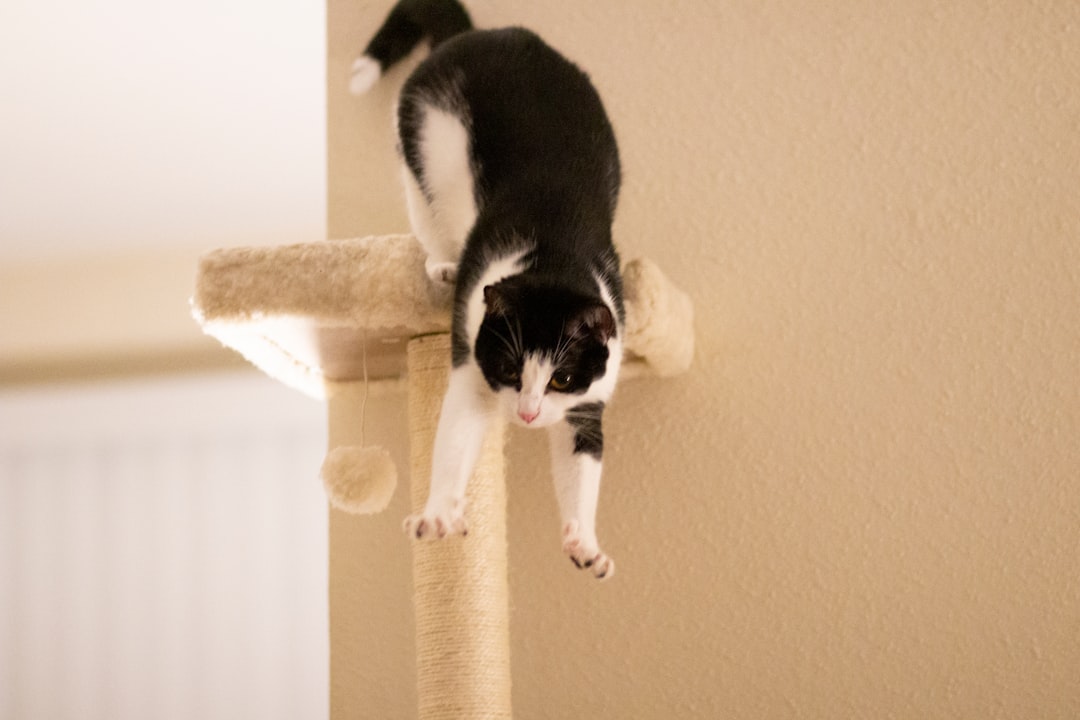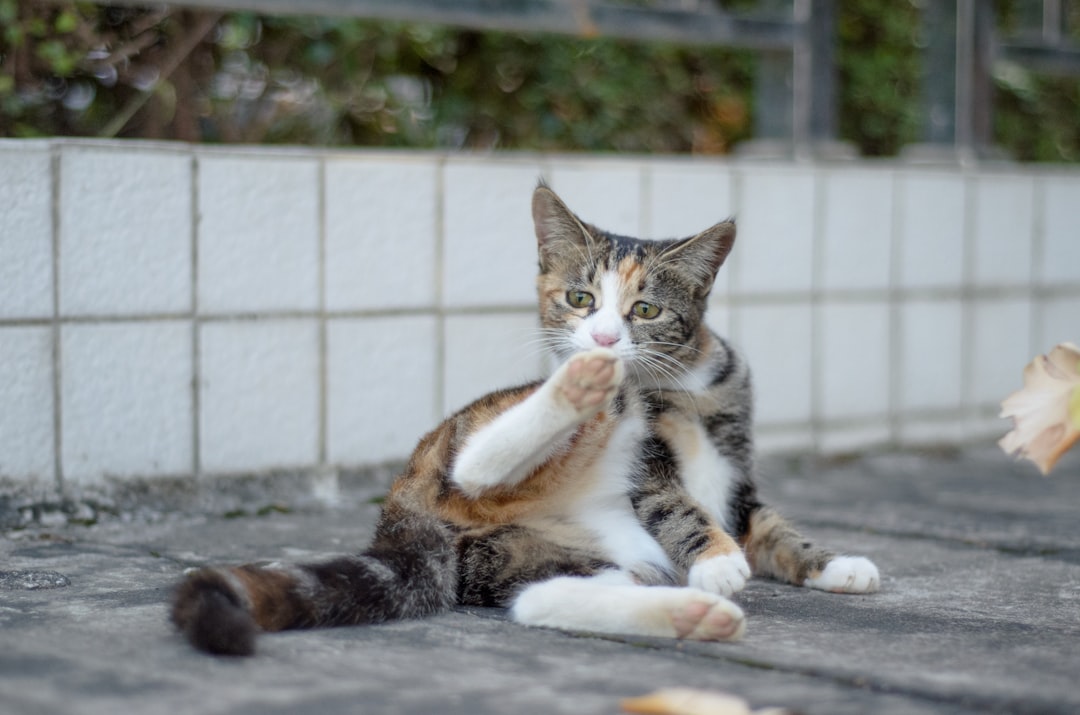You’ve probably heard the age-old saying countless times at family dinners or watching your feline friend navigate your bookshelf with seemingly impossible grace. The idea that cats always land on their feet has become so deeply ingrained in our collective consciousness that we barely question it anymore. Yet behind this simple statement lies a fascinating blend of physics, biology, and evolutionary brilliance that has puzzled scientists for centuries.
The truth, as you might expect, is far more nuanced than the saying suggests. While cats possess an extraordinary ability to right themselves during falls, the reality involves complex mechanics, surprising limitations, and some genuinely mind-bending physics that even modern researchers are still working to fully understand. So let’s dive into the captivating world of feline aerodynamics and separate the remarkable facts from persistent fiction.
The Science Behind the Righting Reflex

The cat righting reflex is a cat’s innate ability to orient itself as it falls in order to land on its feet. This isn’t some magical feline superpower, though it certainly seems like one when you watch it in action. The righting reflex begins to appear at 3–4 weeks of age, and is perfected at 6–9 weeks.
What makes this possible is a combination of remarkable anatomical features that work together like a perfectly orchestrated symphony. Cats are able to do this because they have an unusually flexible backbone and no functional clavicle (collarbone). Cats also have incredibly unique skeletal structures: they have no collarbone and a very flexible backbone with 30 vertebrae.
The process itself is surprisingly sophisticated. The vestibular apparatus inside a cat’s ear is used for balance and orientation and this enables cats to quickly figure out which way is up, and rotate their head so the body can follow. If you watch a slow-motion video of a cat falling (not something we recommend you intentionally try at home), you’ll notice that cats rotate their head first to align with the ground. “Then, using their front legs, they twist the upper body, followed by the lower body,” says Georgina. This segmented motion allows them to achieve the correct landing position.
The Mathematical Mystery That Stumped Physicists

Here’s where things get truly fascinating: The first research paper to tackle the subject was published in the year 1700 by a French scientist named Antoine Parent. For context, Isaac Newton was still alive at the time and his groundbreaking physics work Philosophiæ Naturalis Principia Mathematica was only 13 years old. Yet even with centuries of scientific advancement, the mechanics of cat falling remained a genuine puzzle.
The breakthrough moment came in 1894 when physiologist Etienne-Jules Marey presented a sequence of high-speed photographs taken of a falling cat, the first of their kind, showing clearly that the cat begins falling upside-down without any rotation but nevertheless manages to turn over to land on its feet. This demolished the prevailing scientific belief that cats needed to push off from their starting position to generate the necessary rotation.
“One of the reasons that physicists were surprised that cats could rotate to always land on their feet is the conservation of angular momentum,” Greg Gbur, a physicist at the University of North Carolina at Charlotte, told Live Science. Essentially, this means that if something twists clockwise, something else has to twist counterclockwise. Imagine a cat falling from a stationary upside-down position.
The solution involves what scientists now call the “bend-and-twist” model of cat-righting, is arguably the most important movement that a cat undertakes to turn itself over. Think of it like sitting in an office chair: if you twist your body suddenly to the left, the chair counter-rotates to the right.
Terminal Velocity and the Height Paradox

One of the most counterintuitive findings about falling cats emerged from the famous 1987 study that examined real-world cat falls in New York City. In a 1987 study, published in the Journal of the American Veterinary Medical Association, of 132 cats that were brought into the New York Animal Medical Center after having fallen from buildings, it was found that injuries per cat increased positively with altitude until a height of seven stories, at which point injuries decreased. One cat fell 40 stories without injury, having apparently bounced off a canopy and into a planter. The study’s authors speculated that, after falling five stories, the cats reached terminal velocity, at which point they relaxed and spread their bodies out to increase drag.
An average-sized cat with its limbs extended achieves a terminal velocity of about 60 mph (97 km/h), around half that of an average-sized man, who reaches a terminal velocity of about 120 mph (190 km/h). Past studies have shown that a cat falling from a 32 stories tall building will achieve terminal velocity until she has fallen through a height equivalent to five stories.
This creates the paradoxical situation where Cats who fell from between 7 and 32 stories suffered less injuries, while those who fell between 2 and 6 stories sustained more injuries. The theory suggests that once cats reach terminal velocity, they relax and spread out like natural parachutes, distributing the impact more evenly across their bodies.
When the Reflex Fails: Real Limitations

Despite the impressive statistics and physics, the harsh reality is that cats don’t always stick their landings perfectly. While the righting reflex is impressive, it’s not foolproof. Here are some of its limitations: Short falls: “If a cat falls from a very low height (less than 1–2 feet), there may not be enough time to fully engage the reflex, leading to injury,” explains veterinary expert Georgina Harris.
The righting reflex is remarkable, but as Miller says, “Cats are not invincible.” If a cat doesn’t have enough time or height to adjust its body in midair, or if they’re caught off guard, they may not land properly. Even a well-executed landing can result in injury. Here are a few factors that can affect your cat’s chances of successfully landing on their feet.
Age plays a significant role in success rates. You’re not the only one who gets a little stiffer with age – cats do too. Even before they hit their senior years around age 10, many start to experience joint stiffness or arthritis that can make midair twists more difficult. Aging cats also tend to lose muscle mass and may struggle with balance. Weight and body condition also matter, though some cat breeds, like Abyssinians or Bengals, tend to be more agile and muscular than stockier, less athletic breeds, such as Persians or Scottish Folds. That said, they agree: All healthy cats are capable of performing the righting reflex.
High-Rise Syndrome: The Sobering Statistics

The veterinary community has developed specific terminology for the injuries cats sustain from significant falls: high-rise syndrome. High-rise syndrome is defined as a fall from a height of 2 or more stories that results in a constellation of injuries, including thoracic, abdominal, orthopedic, and orofacial trauma. The statistics, while showing remarkable survival rates, also reveal the serious consequences these falls can have.
Among the 1125 HRS cases, circulatory shock was observed in 48.6%, craniocerebral injury in 2.8%, thoracic trauma in 58.3%, orofacial lesions in 51.1% and blunt abdominal trauma in 14.6%. Musculoskeletal injuries were common, with limb fractures occurring in 47.2% of cases and pelvic fractures in 11.1%. The overall survival rate was 87%, while 13.3% of cats died or were euthanased as a result of trauma severity or poor prognosis.
96.5% of the presented cats, survived after the fall. 46.2% of cats had fractured limbs; 38.5% of fractures were of the forelimb, 61.5% of the hindlimb. The tibia was fractured most often (36.4%), followed by the femur (23.6%). These numbers tell us that while most cats do survive falls, many require extensive medical treatment and experience significant pain and trauma.
The Evolutionary Advantage

The righting reflex likely evolved as a survival mechanism. Cats are natural climbers, often scaling trees or high structures in search of prey or safety. Falling from a height is a common risk, and the ability to land on their feet increases their chances of survival. “This skill also protects vital organs by distributing the force of impact,” says Georgina.
Most wild species in the cat family, but few in the dog family, climb trees. For millions of years, cats have been intentionally springing from trees onto their prey, as well as falling out of trees accidentally. This evolutionary pressure shaped not just their righting reflex, but their entire body structure.
Though we see cats usually living in someone’s house, cats are traditionally arboreal animals (they live in trees). Because sooner of later they are bound to fall, and any tree-dwelling animal will eventually pounce for prey and miss, cats are evolutionarily adapted to survive falls. That is to say, it is evolutionarily beneficial to be able to survive a fall, and as such modern house cats retain this ancestral adaptation.
Interestingly, While cats provide the most famous example of this reflex, they are not the only animal known to have a mid-air righting capability. Similar phenomena have been observed in other small vertebrates such as rabbits, rats, lizards, and certain invertebrate tailed arthropods (e.g. stick insects), showing that this remarkable ability isn’t unique to our feline friends, though they’ve certainly perfected it.
Conclusion

So, The answer is a qualified “mostly, but not always.” With their righting reflex, cats often land uninjured. However, this is not always the case, since cats can still break bones or die from extreme falls. The remarkable physics and biology behind their aerial acrobatics represents millions of years of evolutionary refinement, creating one of nature’s most impressive survival mechanisms.
The saying contains enough truth to persist through generations, but the reality is far more complex and fascinating than the simple phrase suggests. Understanding these limitations helps us better protect our feline companions while marveling at their extraordinary abilities. What do you think about it? Tell us in the comments.





